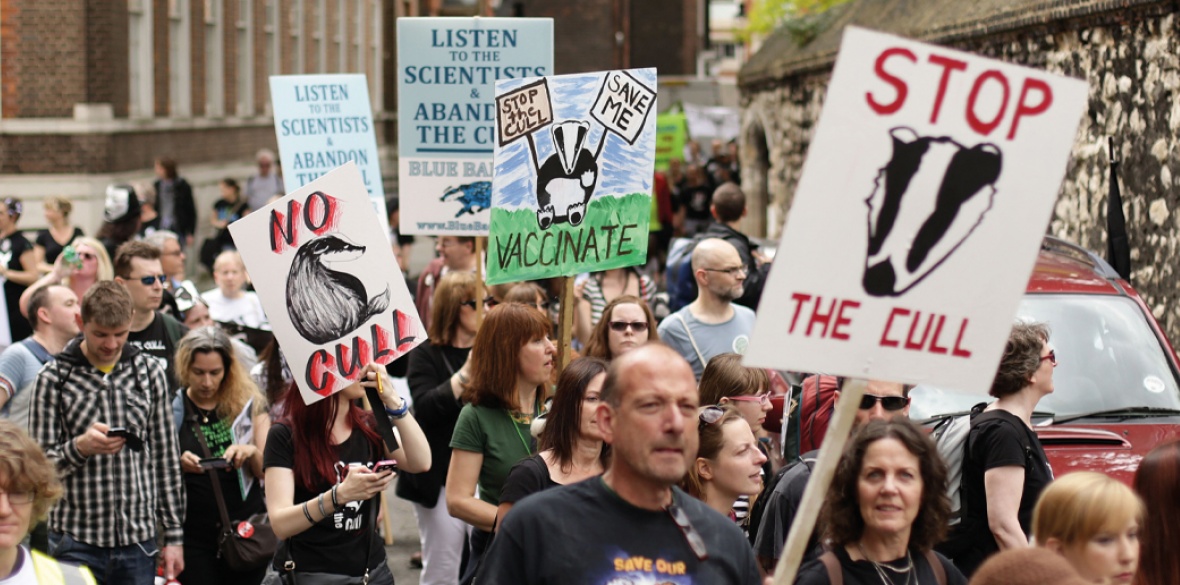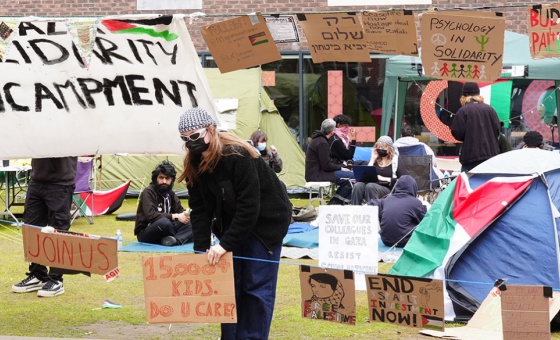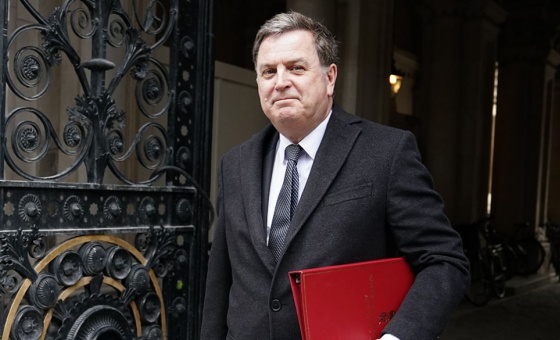This is the last article you can read this month
You can read more article this month
You can read more articles this month
Sorry your limit is up for this month
Reset on:
Please help support the Morning Star by subscribing here
LAST YEAR’S continuing murderous badger culls were a fiasco, from beginning to end. That isn’t just my opinion but also that of a government-commissioned report. Worse, it now seems that Defra’s own figures on tuberculosis levels in cattle, used to justify the cull, have been exaggerated.
No surprise really, If Prime Minister Johnson, Rishi Sunak,
other Tory Cabinet ministers and government advisers, including ethics adviser Helen MacNamara, can get caught out lying about office parties they can certainly lie about selling the right to shoot one of our most beautiful mammals to their so-called “country sports” loving mates.
This ugly, cruel and totally unacceptable practice — the badger shooting, not the Westminster parties — needs to be stopped. Scientists and badger experts know that shooting badgers simply doesn’t work.
Independent scientific assessment of several years of badger culls have confirmed what many of us knew all along. The cull was expensive, inhumane and an almost total failure.
Defra had agreed with badger experts and shooters that a humane standard was for no more than 5 per cent of the shot badgers to take longer than five minutes to die. In reality one badger in five took longer to die. They lingered on for more than five painful distressing minutes.
The cull, despite being extended, failed miserably to hit the hoped for targets to reduce badger numbers. Final figures show that the two pilot badger culls in Somerset and Gloucestershire cost more than £7 million.
Dominic Dyer, of animal charity, Care for the Wild, says the government had delivered one of the “most disastrous and expensive wildlife culls in history.”
“It has wasted millions of pounds on a badger cull which has no scientific, animal welfare or economic justification and was carried out in an outrageously sloppy manner which would have been laughable if it hadn’t cost so many badgers’ lives.”
The pilot culls were supposed to reduce the incidence of bovine TB in cattle but extensive research carried out by Prof Rosie Woodroffe of the London Zoological Society has shown that a failure to kill the targeted 70 per cent of badger numbers could actually worsen matters as disturbed and diseased animals take the TB into new areas.
Prof Woodroffe was among 32 scientists who wrote to Owen Patterson — then Defra minister in 2012 — expressing fears that the culls risked increasing TB in cattle rather than reducing it.
“Our predictions have been borne out,” she tells us now. “It has cost a fortune and probably contributed nothing in terms of disease control,” she told us at the time.
“The way to solve bovine TB is by radically improving farming practices, ensuring that TB testing actually works and ensuring infected cattle aren’t moved from farm to farm.”
Today we know there are better and more humane ways to deal with this disease, through vaccination for badgers and cattle, improved on-farm bio-security measures and greater control over cattle testing and movement.
It is certainly true that bovine TB is a real threat to Britain’s farmers but the reality, as recent reports prove, is that simply shooting badgers is not the way to solve the problem.
The secret seal massacre
It isn’t just badgers that are victims of cruel and unnecessary culls. Hundreds of seals are being killed every year in British waters in secret seal culls — hardly anyone knows about it.
“If people knew the price that was being paid by seals for salmon they wouldn't be prepared to buy them,” says Andy Ottaway of the Seal Protection Action Group.
Each year, the fishing industry slaughters hundreds of harbour seals and grey seals in the waters around Scotland. And because the killing is legal all year round, many mothers are killed as well, leaving their pups to starve when their mothers never return.
This seal cull has received very little attention because the Scottish fishing industry has kept it fairly secret for decades. Back in 1978, Britain planned a massive seal culling similar to Canada’s infamous seal-clubbing season.
Norwegian marksmen targeted 6,000 seals around Orkney. When the public found out, they were furious and the culling was called off.
Those of us who had protested and seen the cull called off thought the seals were safe. But it was still legal to shoot seals without reporting the killings and so the Scottish seal culling continued for years — only in secret.
Every year, thousands of seals were shot without anyone, including the government for the most part, knowing about it. The cull makes a large contribution to the fact that British populations of both harbour and grey seals have declined by half.
The protests continued and in 2010 this growing campaign led to the Marine Act (Scotland) 2010, a new law that requires seal hunters to be licensed and to report their killings. Seal deaths have since dropped according to totals provided by those who are killing the seals.
Of course there is no way to tell if people are actually reporting all the seals they kill.
The Seal Protection Action Group encourages the fishing industry to use seal-proof nets and similar tactics to deflect seals and says that, when properly used, modern equipment is more than sufficient to keep seals out.
Seals have long been a scapegoat for Scottish fisher-folk. Seals have long been viewed as pests. Times have moved on, but not for those killing the seals.
Like badgers we should not be shooting beautiful, sentient creatures just because we view them as a pest. Some of the largest wildlife slaughters taking place today are directed at seals — and yet very little is being done about it.
Don’t forget the whales
Why is it that even we nature lovers sometimes forget some of Britain’s biggest wild animals? Often they are not just biggest in Britain but the biggest in the world.
Just a week or so ago the body of a 10-foot long animal was found on Gorleston beach. It was a young minke whale that beached itself at Gorleston, near Great Yarmouth in Norfolk.
It may have been 10-foot long but this minke was just a baby. It had been seen earlier with its mother who was three times as long as the baby. Yet the minke is actually the smallest of whales found in British waters.
The northern minke whale, most often referred to as the minke whale in Britain, is found throughout the oceans of the northern hemisphere. They are markedly smaller than the other baleen whales found in British seas.
Minke whales are generally spotted alone or in small feeding groups feasting on schools of fish or krill. They are what is known as a “gulp feeder,” meaning they take a huge gulp of fish and push the seawater out through the baleen plates that line their mouths. You can sometimes spot minke whales lunge-feeding into a school of fish near the surface.
This relatively small streamlined rorqual whale reaches an adult length of 24-30 feet. They have a sleek, dark grey body and a tall sickle-shaped fin that curves backwards. Look out for the distinctive white armbands on the pectoral fins (front flippers). Their blow is weak or invisible.
They can often be spotted in near-shore waters around Britain, though rarely in the southern North Sea and English Channel.
The Gorleston baby had been seen swimming with its mother in the days before it came ashore. It was still living on its mother’s milk.
Whales are mammals but the young suckle not from a mother’s nipples but by licking very thick and creamy milk secreted through the mother’s skin.
With no adult nearby there was little to no chance of the calf surviving on its own and experience had taught rescuers that refloating it would only lead to it being washed up again and prolonging its suffering.
Sadly the marooned baby could not be artificially fed and had to be euthanised. I’ll be looking out for some of the surprisingly numerous whales and other sea mammals including seals later in the year. They are certainly one of our most spectacular wildlife sights.










